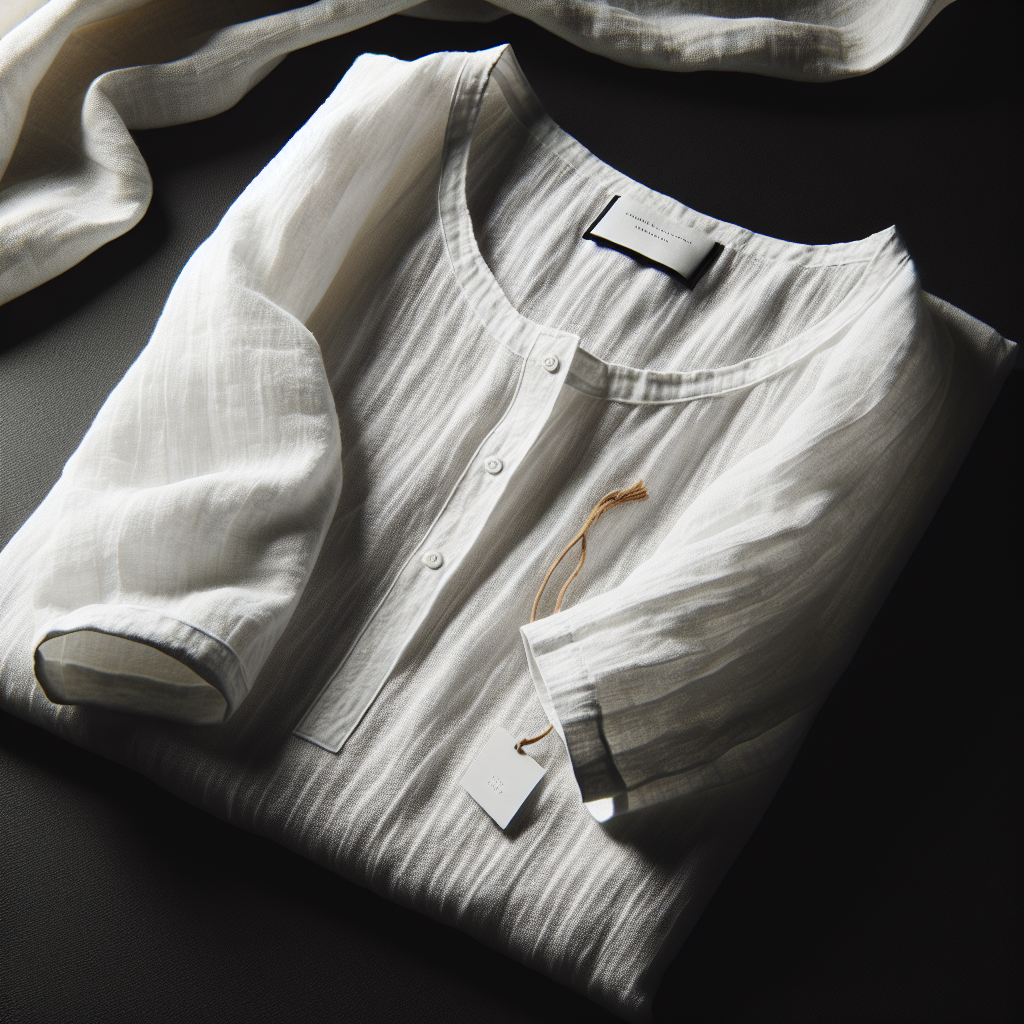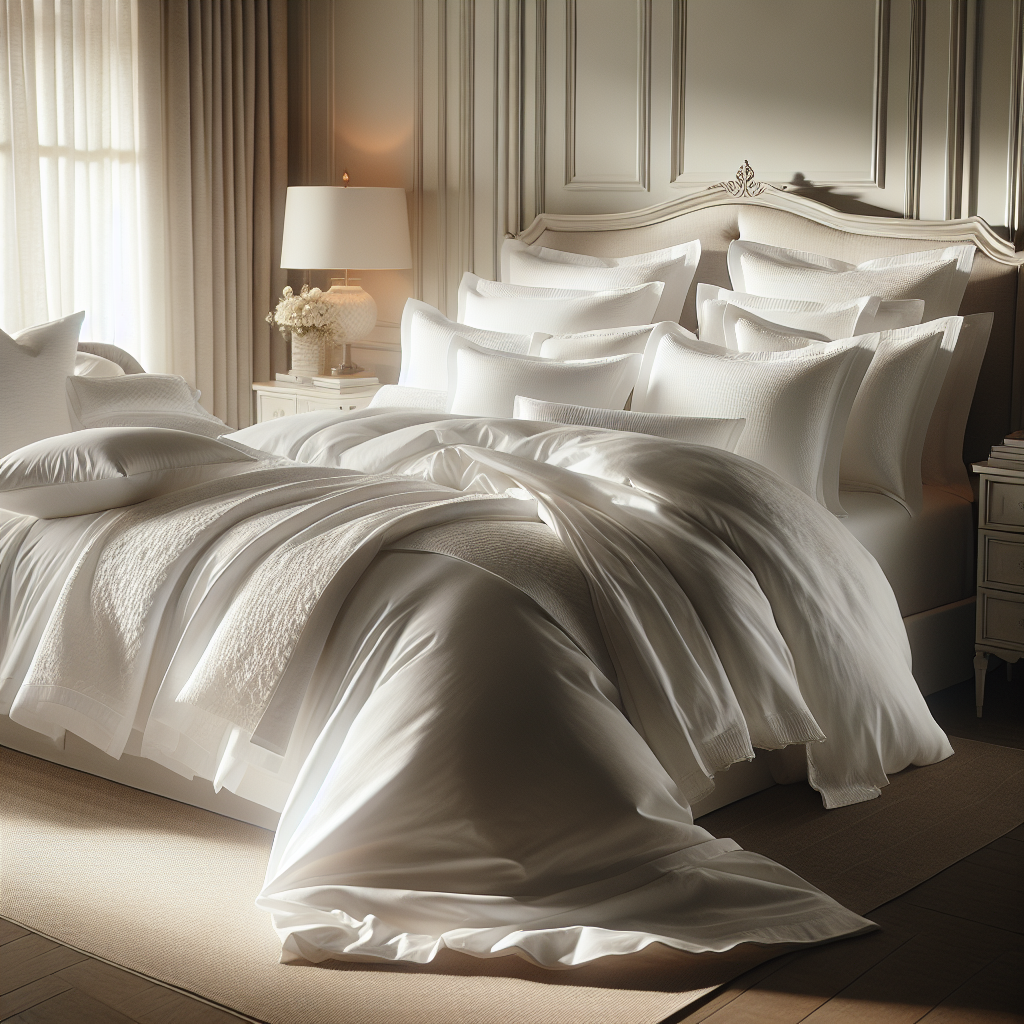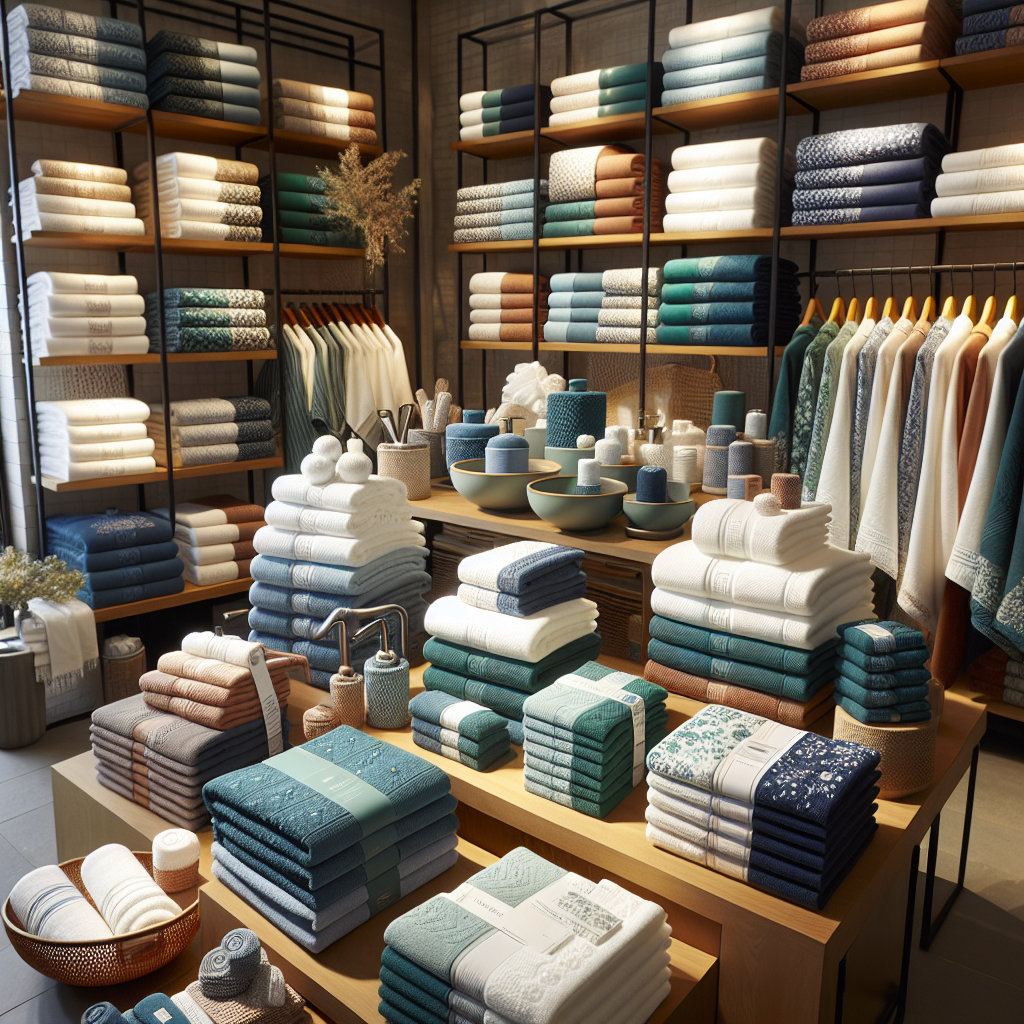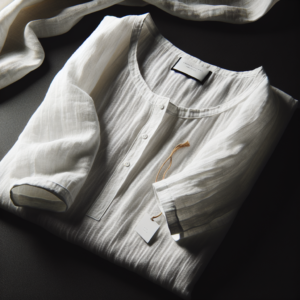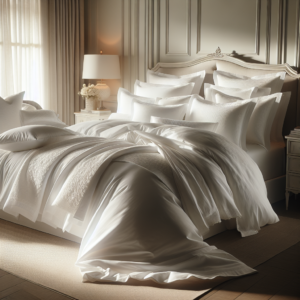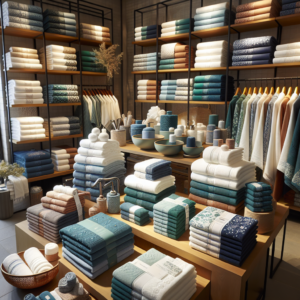The Impact of Sustainable Materials on the Bed Linen Industry: A Statistical Analysis
The bed linen industry has seen a significant shift in recent years, with more and more consumers becoming conscious of the environmental impact of their purchases. As a result, there has been a growing demand for sustainable materials in the production of bed linen. This shift towards sustainability has not only had a positive impact on the environment, but it has also brought about significant changes in the bed linen industry. In this article, we will delve into the statistics behind the impact of sustainable materials on the bed linen industry.
According to a report by Grand View Research, the global sustainable textiles market size was valued at USD 127.2 billion in 2019 and is expected to grow at a compound annual growth rate (CAGR) of 9.9% from 2020 to 2027. This growth can be attributed to the increasing awareness among consumers about the harmful effects of traditional textile production methods on the environment. As a result, there has been a surge in demand for sustainable materials, including organic cotton, bamboo, and linen, in the production of bed linen.
Organic cotton, in particular, has gained popularity in the bed linen industry due to its eco-friendly and sustainable nature. According to the Organic Trade Association, the global organic cotton market was valued at USD 5.02 billion in 2019 and is expected to reach USD 8.81 billion by 2025, growing at a CAGR of 9.2%. This growth can be attributed to the increasing demand for organic cotton bed linen, which is free from harmful chemicals and pesticides, making it a safer and healthier option for consumers.
Another sustainable material that has gained traction in the bed linen industry is bamboo. According to a report by Transparency Market Research, the global bamboo market size was valued at USD 68.3 billion in 2019 and is expected to reach USD 98.3 billion by 2027, growing at a CAGR of 5.5%. This growth can be attributed to the increasing use of bamboo in the production of bed linen due to its sustainable and renewable nature. Bamboo is also known for its antibacterial and hypoallergenic properties, making it a popular choice among consumers.
In addition to organic cotton and bamboo, linen has also emerged as a sustainable material in the bed linen industry. According to a report by Research and Markets, the global linen fabric market size was valued at USD 9.2 billion in 2019 and is expected to reach USD 12.8 billion by 2027, growing at a CAGR of 4.3%. This growth can be attributed to the increasing demand for linen bed linen, which is known for its durability, breathability, and eco-friendliness. Linen is also a highly sustainable material as it requires less water and pesticides to grow compared to other crops.
The shift towards sustainable materials in the bed linen industry has not only had a positive impact on the environment but has also brought about significant changes in consumer behavior. According to a survey by Cotton Incorporated, 69% of consumers are willing to pay more for sustainable products, and 42% of consumers are more likely to purchase bed linen made from sustainable materials. This change in consumer behavior has led to an increase in the production and availability of sustainable bed linen in the market.
In conclusion, the statistics clearly show the significant impact of sustainable materials on the bed linen industry. The growing demand for organic cotton, bamboo, and linen bed linen is not only driving the growth of the sustainable textiles market but is also changing consumer behavior towards more eco-friendly and sustainable choices. As the demand for sustainable bed linen continues to rise, it is evident that the industry will continue to evolve and adapt to meet the changing needs of consumers and the environment.
Trends in Bed Linen Purchasing: A Look at Consumer Behavior and Spending Habits
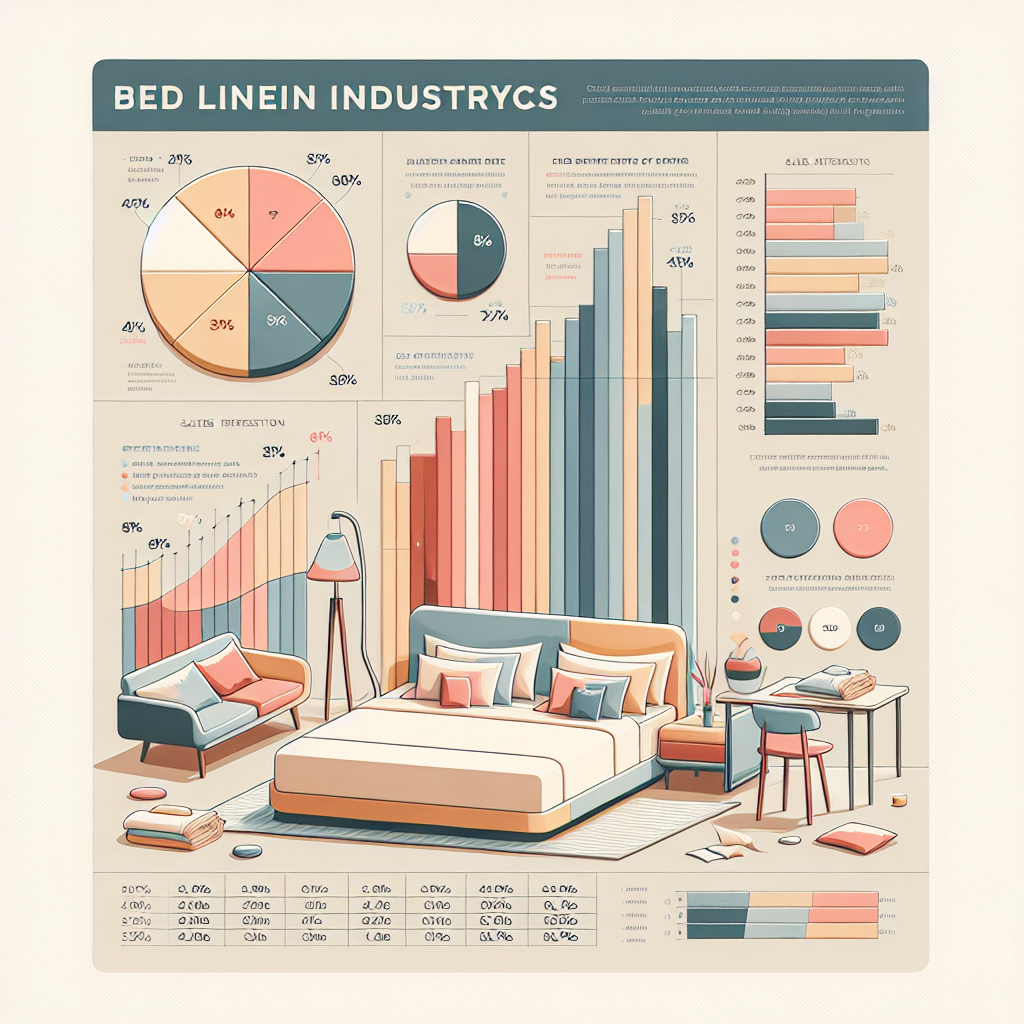
The bed linen industry has seen significant growth in recent years, with consumers becoming more conscious of the importance of quality bedding for a good night’s sleep. As a result, the market for bed linen has become increasingly competitive, with a wide range of options available to consumers. In this article, we will take a closer look at the trends in bed linen purchasing, examining consumer behavior and spending habits to gain a better understanding of this thriving industry.
One of the most notable trends in bed linen purchasing is the increasing demand for organic and sustainable options. With a growing awareness of the impact of consumer choices on the environment, many consumers are now seeking out bedding made from organic materials such as cotton, linen, and bamboo. According to a report by Grand View Research, the global organic bedding market is expected to reach $1.1 billion by 2025, with a compound annual growth rate of 4.1%. This trend is driven by consumers’ desire for products that are not only comfortable but also environmentally friendly.
Another trend that has emerged in recent years is the preference for luxury and high-end bed linen. As consumers become more willing to invest in quality bedding, the demand for premium options has increased. This trend is particularly evident in the hospitality industry, where luxury hotels are now offering high-end bedding as a way to differentiate themselves and provide a superior guest experience. According to a report by Allied Market Research, the global luxury bedding market is expected to reach $2.6 billion by 2022, with a compound annual growth rate of 5.4%.
In addition to the type of material and quality, consumers are also paying more attention to the design and aesthetics of their bed linen. With the rise of social media and home decor influencers, there is a growing emphasis on creating a visually appealing and Instagram-worthy bedroom. This has led to an increase in demand for bedding with unique patterns, colors, and textures. According to a survey by the National Sleep Foundation, 73% of consumers consider the design and appearance of bedding to be an important factor in their purchasing decision.
When it comes to spending habits, consumers are becoming more price-conscious and are looking for value for their money. This has led to the rise of online retailers and direct-to-consumer brands, which offer competitive prices and convenience. According to a report by Statista, online sales of bed linen in the United States reached $3.5 billion in 2020, and this number is expected to continue to grow in the coming years. This trend is also driven by the COVID-19 pandemic, which has led to an increase in online shopping as consumers avoid physical stores.
In addition to online shopping, consumers are also increasingly turning to subscription-based services for their bedding needs. Companies like Parachute and Brooklinen offer subscription options where consumers can receive new bedding on a regular basis, eliminating the need to constantly shop for new sheets and duvet covers. This trend is driven by the convenience and cost-effectiveness of subscription services, as well as the desire for fresh and clean bedding.
In conclusion, the bed linen industry is constantly evolving, with new trends and consumer behaviors shaping the market. From a growing demand for organic and sustainable options to a preference for luxury and unique designs, the industry is catering to the changing needs and preferences of consumers. As the market continues to grow and evolve, it will be interesting to see how these trends will shape the future of the bed linen industry.
The Growing Demand for Luxury Bed Linens: A Statistical Overview of the Market
The bed linen industry has seen a significant growth in recent years, driven by the increasing demand for luxury bed linens. As people become more aware of the importance of a good night’s sleep, they are willing to invest in high-quality bed linens that not only provide comfort but also add a touch of luxury to their bedrooms. This trend has been reflected in the statistics of the bed linen market, which show a steady rise in sales and revenue.
According to a report by Grand View Research, the global bed linen market size was valued at USD 14.6 billion in 2020 and is expected to reach USD 17.3 billion by 2027, growing at a CAGR of 2.6% during the forecast period. This growth can be attributed to various factors, including the increasing disposable income of consumers, the rise in the number of luxury hotels and resorts, and the growing trend of home decor and interior design.
One of the key drivers of the bed linen market is the rising demand for premium and luxury bed linens. As people become more affluent, they are willing to spend more on high-quality products that offer both comfort and style. This has led to a surge in the sales of luxury bed linens, which are made from premium materials such as Egyptian cotton, silk, and linen. These materials not only provide a luxurious feel but also offer superior comfort and durability, making them a popular choice among consumers.
Another significant factor contributing to the growth of the bed linen market is the increasing number of luxury hotels and resorts. With the rise in international tourism and the growing trend of experiential travel, the demand for luxury accommodation has also increased. This has led to a rise in the demand for high-quality bed linens in the hospitality industry, as hotels and resorts strive to provide their guests with a luxurious and comfortable stay. As a result, the demand for luxury bed linens has increased, creating a lucrative market for manufacturers and suppliers.
The trend of home decor and interior design has also played a crucial role in the growth of the bed linen market. With the rise of social media and home renovation shows, people are becoming more conscious of their living spaces and are willing to invest in home decor and furnishings. Bed linens, being an essential part of home decor, have also witnessed a surge in demand. Consumers are now looking for bed linens that not only provide comfort but also add a touch of elegance and style to their bedrooms. This has led to the emergence of various luxury bed linen brands, offering a wide range of designs and styles to cater to the diverse preferences of consumers.
The statistics also show a significant shift in consumer preferences towards sustainable and eco-friendly bed linens. With the growing concern for the environment, consumers are now looking for products that are made from organic and sustainable materials. This has led to the rise of eco-friendly bed linen brands, offering products made from organic cotton, bamboo, and other sustainable materials. This trend is expected to continue, with more consumers becoming environmentally conscious and seeking sustainable options for their bedding needs.
In conclusion, the statistics of the bed linen market clearly reflect the growing demand for luxury bed linens. With the rise in disposable income, the increasing number of luxury hotels and resorts, and the trend of home decor and interior design, the market is expected to witness further growth in the coming years. As consumers continue to prioritize comfort, style, and sustainability, the demand for high-quality bed linens is expected to remain strong, making it a promising market for manufacturers and suppliers.


